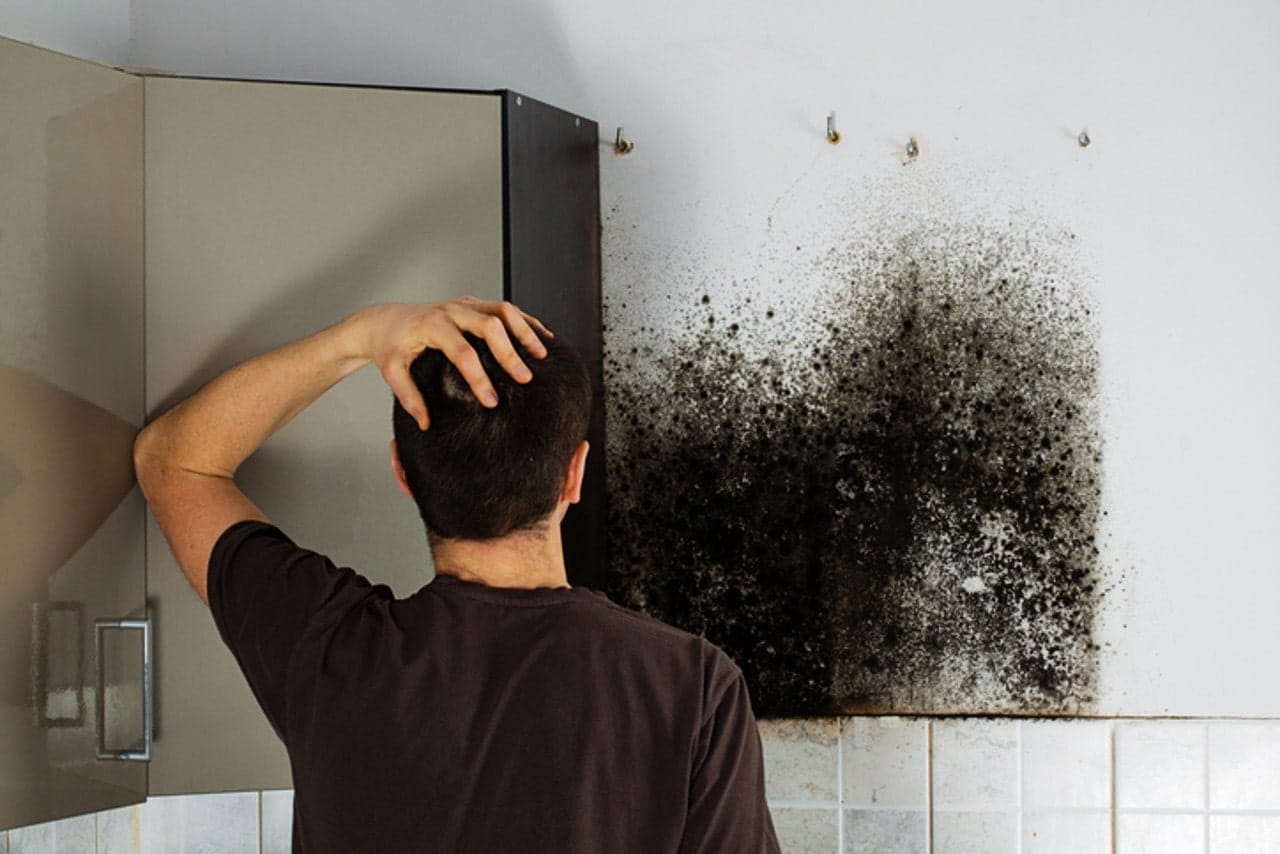Allergies are your body’s reaction to foreign proteins known as allergens. Whether it's sneezing, itching, or wheezing, many Singaporeans are probably familiar with the numerous bothersome symptoms caused by allergies. Common types of allergy include allergic rhinitis, skin allergy, asthma, and food allergy.
Symptoms of allergies may interfere with an individual's daily tasks and impact their quality of life. Allergies are on the rise globally, especially among children. Research has shown that if you have allergy problems, there is a greater chance that your children could inherit the same genes responsible for your allergies [1].

Today in this post, we examine why people should treat their allergies, a few prevention strategies, as well as treatments that are available for allergies. So, peruse the article and get to know more.
Why should I seek treatment for my allergies?
There are possibly endless reasons why you would want to treat your allergies. Most doctors out there might tell you that the most important reason to seek treatment for your allergies is the prevention of allergic march progression. But what is an allergic march in the first place?
Without the correct diagnosis and proper treatment, allergic conditions can easily progress from eczema or even allergic rhinitis to asthma or food allergies[2]. It implies that by treating your allergies early, you can potentially save yourself from the burden of facing more serious future health conditions such as allergic rhinitis and asthma.
Additionally, you can substantially save on costs for both you and your family with early treatment and prevention measures. When allergy march progression occurs, you would have to fork out significant amounts of expenditure to deal with flare-ups. Additionally, conditions such as asthma would require persistent treatments and management which can be financially burdensome.
Being able to carry out your daily activities without having to worry about the worrisome symptoms of allergies would definitely improve your overall well-being. As cliche as it may seem, prevention is yet again better than cure.
How can I treat allergies naturally at home?
It is worth noting that not all types of allergies are self-manageable. Where asphyxiation or extreme discomfort or pain occurs from an allergic reaction, you should always seek medical intervention. Nevertheless, there are some measures you could implement at home and in your lifestyle to prevent flare-ups for conditions such as nasal allergies and skin allergies. These measures are also known as natural non-pharmacological treatments for allergies.
Natural non-pharmacological treatments for allergies
Non-pharmacological allergy treatments can be categorised into two, allergen management at home and strategies to build immunity or tolerance against your allergy triggers. These measures do not involve persistent medication and dependence on pharmacological products.
- Allergen management at home
Allergen management at home describes actions that can be taken by allergy-prone patients to reduce the risks of flare-ups.
Below are some realistic measures that are worth implementing and will surely result in the improvement of your condition:
- Eliminate dust mites either through sunning or drying your bed sheets as well as pillowcases.
- Dehumidify your home as low levels of humidity can potentially improve lung functions for asthmatic patients.
- Quit smoking.
- Wash as well as vacuum curtains and carpets more regularly.
- Use an air purifier that features HEPA filters.

- Building allergy tolerance
On top of practising allergen management at home, there are some practical solutions that you can easily integrate into your lifestyle.
These will build resistance against flare-ups and potentially increase your immunity:
- Consumption of probiotics
- Increasing your outdoor physical activities as well as time in nature
- Consuming more fresh fruits and vegetables and whole grains
What allergy treatment options are available in Singapore?
Sometimes when allergy reactions have exacerbates, preventative measures may only improve but not necessarily treat your symptoms.
Below are medications also known as pharmacological allergy treatment that would be prescribed to manage allergic reactions:
- Antihistamines
Antihistamines are arguably the best treatment for allergies [3]. Available in tablet form, antihistamines provide instant relief against mild allergies. However, for people with moderate to severe allergy symptoms antihistamines may only provide minimal and short-lived relief. This particular medication can potentially cause tachyphylaxis as a negative effect, which occurs when your system fails to respond to the medication.
Some antihistamines may also cause drowsiness as a side effect, forcing allergy patients to sleep even during the day while at work. Common antihistamine medications include Telfast, Loratidine, Zyrtec, Diphenhydramine, and chlorpheniramine.
- Decongestants
Decongestants are another type of medication used in the treatment of allergies. These medications work by compressing the mucous membranes in your nasal passages, relieving stuffy nose symptoms. Decongestants can be found in either tablets or nose sprays and may include Iliadin nose drops, Clarinase, Zyrtec (D), as well as Telfast (D).
For drops such as gliadin, preparations for toddlers are equally available. But you should not use them for more than five days as this can potentially trigger a recurring blocked nose. They are free from any side effects and are highly effective if used appropriately.

- Nasal rinses (saltwater nasal washes)
Many allergy patients often experience allergens getting trapped in their nasal mucosa surfaces. This implies that nasal sprays, including intranasal steroids or decongestants, may not get to where they are needed for absorption due to nasal passages getting blocked with mucus. What's more, some allergens are likely to remain trapped inside mucosal surfaces, leading to unending or recurrent allergy symptoms.
There is a plethora of nasal rinses, ranging from sinus rinses to neti pot. However, these nasal rinses should only be used together with salt water and not regular water.
- Anti-leukotrienes
These medications work by preventing inflammation in your air passages. Only introduced a few years ago, this medication can effectively and safely combat both sensitive lungs and the nose. What's more, it may be used in conjunction with antihistamines to improve allergy symptoms. Anti-leukotrienes are also free from side effects and are equally well-tolerated by children. Common examples may include Singulair and Montelukast.
- Nasal Glucocorticosteroids
If you are like most people, you would be concerned about the negative connotations regarding the use of steroids as a mode of allergy treatment. Research has proven that low steroid doses, especially when administered via the nasal cavity, are highly effective at alleviating allergy symptoms. And while they are always well-tolerated, it may require at least seven days for a sustainable effect to be created before the user can ultimately experience the potential benefits. Common examples include Avamys and Nasonex.
- Inhaled glucocorticosteroids
Popularly known as the red, brown, or purple inhalers, inhaled steroids are also very effective at minimising and preventing airway inflammation as well as subsequent asthma symptoms. Common examples include Beclomethasone, Seratide, as well as Symbicort.
In asthmatic patients, inhalable corticosteroids can alleviate moderate to severe asthma. Due to the life-threatening asthma incidences, it is always a great idea to manage asthma and prevent asthma episodes. When used at the recommended dosages, both nasal and inhaled steroids are extremely safe for both children and adults.
- Oral Glucocorticosteroids
In extreme cases where the management of asthma is somehow poor, tablet steroids may be offered as a short-term treatment solution to minimise air passage inflammation. While quite effective, tablet steroids may cause a few short-term negative effects such as causing a surge in blood sugar levels in diabetic patients and a risk of gastric ulcers. Usually, your doctor will try to strike a balance between the advantages and disadvantages of this medication and any precautions before recommending it to any patient. Common examples of oral glucocorticosteroids include hydrocortisone and prednisolone.
- Topical steroids
For allergic skin-related problems such as eczema, topical steroids, including lotions and creams may be recommended due to their effectiveness in minimising skin inflammation and irritation. However, long-term usage may cause your skin to thin, ultimately impacting the skin's ability to repair itself. A few examples of topical steroids include elomet, desowen, hydrocortisone, and clobetasol.
Are there any ways to permanently treat allergies?
Now that we have discussed the numerous treatment options for allergies, it is time to talk about how to permanently get rid of allergies. The surest way to treat allergies is to identify and eliminate the root cause of your allergies. At our clinic, we provide a two-step solution for the identification and subsequent treatment of allergies.
The first step: Allergy Testing
Allergy testing can be conducted using a Prick Skin Test [4], which is suitable for both kids and adults. This is a very straightforward procedure that only involves a doctor introducing a minute dosage of allergen onto your skin to trigger a response.
While the Skin Prick Test is a painless procedure, it can be itchy. The major disadvantage of this test is that testing options are very limited as opposed to its blood testing counterpart. Whereas some patients do love a simple and prompt blood test, others opt against it due to the pain associated with it.
Step Two: Allergy treatment

Generally, allergy treatment involves priming the body daily to aid identify your allergen and ensure you develop immunity to the allergen. This treatment is referred to as SLIT (Sublingual Immunotherapy). The adobe-described allergy treatment options have helped numerous allergy patients out there, usually offering relief against allergy symptoms within six months [5]. Several studies have proven that SLIT substantially reduces nasal symptoms and is a superior treatment approach. [6]
With this type of treatment, a combination of low-dose spray-form allergens is created, and patients take this particular medication once every day for between 3-5 years. If you are a dust mite allergy victim who travels quite frequently, then the option SLIT should be your preferred medication.
Additionally, SLIT is suitable for children in a similar age group who won't take medications. The Ministry of Health (MOH) of Singapore recommends [7] that Sublingual Immunotherapy should be offered to children aged five and above who are finding it hard to control their sensitive nose symptoms even after undergoing maximum oral therapy treatment. For asthmatic children, SLIT offers an alleviation of asthma symptoms and associated lung allergies.
So, how safe is SLIT for allergy treatment?
SLIT boasts a highly encouraging safety profile. But it's also worth noting that just like any other type of medical treatment option, a few side effects were witnessed, including stomach upsets, asthmatic symptoms, nausea, mild swelling, and itchiness over the throat, lips, and mouth.
References
- Barnes, K.C., 2006. Genetic epidemiology of health disparities in allergy and clinical immunology. Journal of allergy and clinical immunology, 117(2), pp.243-254.
- Zheng, T., Yu, J., Oh, M.H. and Zhu, Z., 2011. The atopic march: progression from atopic dermatitis to allergic rhinitis and asthma. Allergy, asthma & immunology research, 3(2), pp.67-73.
- Golightly, L.K. and Greos, L.S., 2005. Second-generation antihistamines: actions and efficacy in the management of allergic disorders. Drugs, 65, pp.341-384.
- Morris, S.Y. (2018) Skin prick test: Accuracy, how it works, and more, Healthline. Available at: https://www.healthline.com/health/allergies/skin-prick-test-accuracy (Accessed: 22 May 2023).
- Kim, S.H., Mun, S.J., Han, D.H., Kim, J.W., Kim, D.Y. and Rhee, C.S., 2015. Three-year follow-up results of sublingual immunotherapy in patients with allergic rhinitis sensitized to house dust mites. Allergy, asthma & immunology research, 7(2), pp.118-123.
- Radulovic, S., Wilson, D., Calderon, M. and Durham, S., 2011. Systematic reviews of sublingual immunotherapy (SLIT). Allergy, 66(6), pp.740-752.
- Management of rhinosinusitis and allergic rhinitis - ministry of health (no date) Ministry of Health Singapore. Available at: https://www.moh.gov.sg/docs/librariesprovider4/guidelines/cpg_management-of-rhinosinusitis-and-allergic-rhinitis.pdf (Accessed: 22 May 2023).






